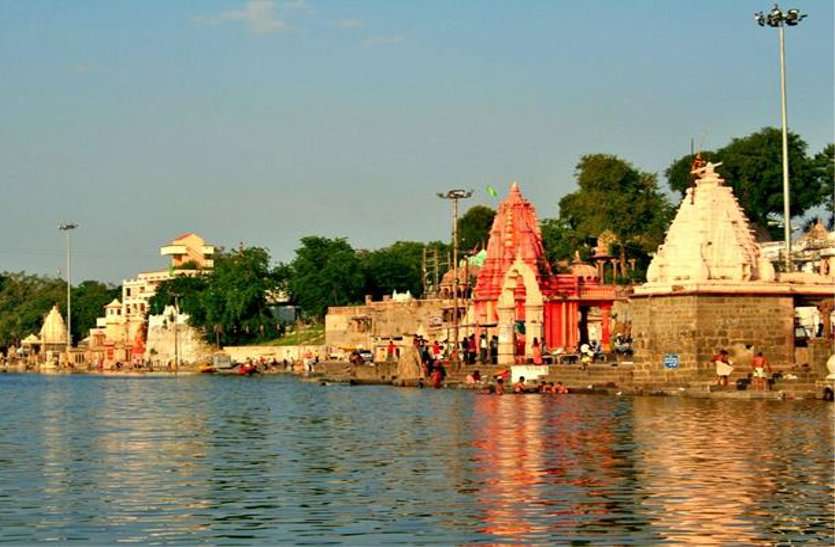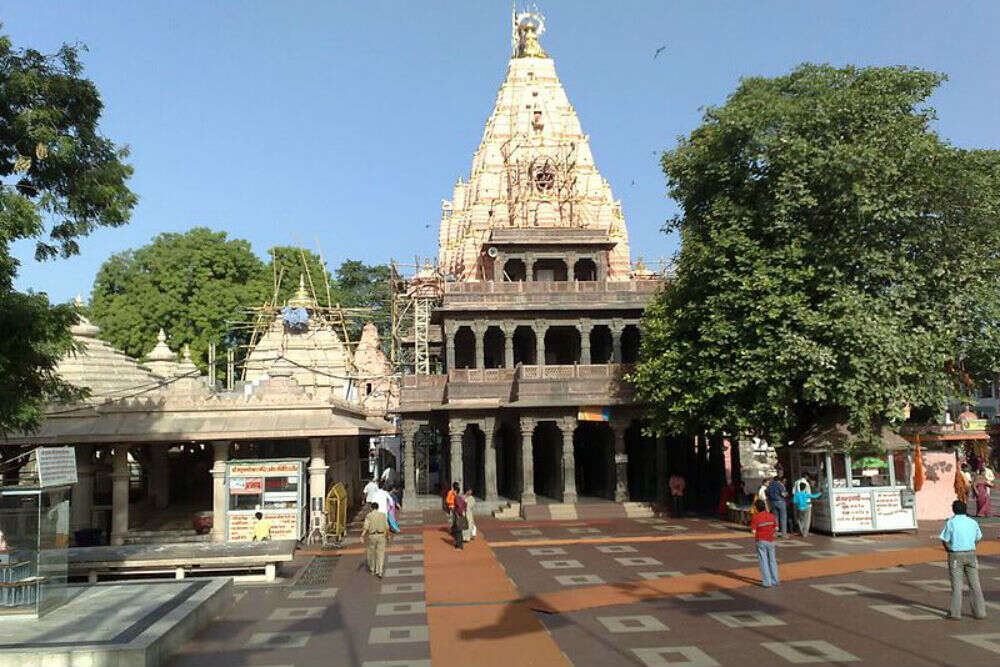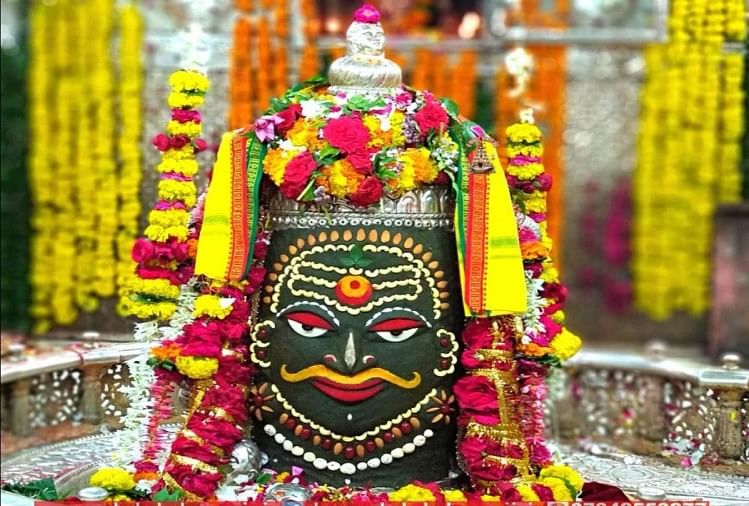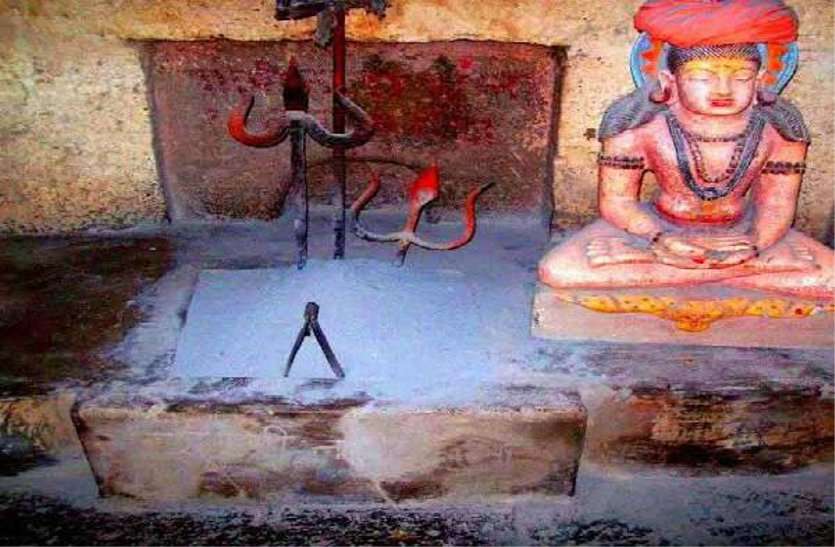Located around 55 km away from Indore, Ujjain is one of the India’s holiest cities. Famed for temples, it is thronged by pilgrims every year who also take ritual baths at the ghats on the Shipra River. It is revered by followers of Shiva, Vaishanavism and Shakti. An important city from the days of the Maghada kingdoms and Mauryan Empire, Ujjain was plundered by Iltutmish of Delhi Sultanate who destroyed the temples. The city was revived by the Marathas with many of the temples rebuilt by the Scindias of Gwalior.
Start your tour at the Mahakaleshwar Mandir, set on a height above the river. The temple soars over its crowded surroundings with a gigantic saffron-painted sanctuary tower. The temple is entered through marble courtyards, with water tanks and fountains, leading to the main shrine which has one of the one of India’s twelve jyotrilingas. It is considered to be one of the most powerful Shivalingas by Tantric followers.
True to its name, the Bade Ganeshjee kaa Mandir houses one of the largest statues of Lord Ganesha in the country. The temple is situated on the opposite side of Mahakaleshwar Dharamshala near the Mahakaleshwar Temple. The idol of Ganesha is painted light pink and is escorted by the idols of Riddhi and Siddhi who are Ganesha’s wives and symbolize prosperity and the power of accomplishment respectively. The temple also has an idol of the Panchmukhi of five-faced Hanuman denoting courage, devotion, strength , loyalty and righteousness. This temple is regularly thronged by pilgrims especially during aarti that takes place every morning and evening.
From here, take the road to the Rudra Sagar tank and the Harsiddhi Mandir, erected by the Marathas in the eighteenth century. The temple features Marathi lamp towers and the sanctuary has images of Mahalakshmi, Annapurna and Saraswati.
Ram Ghat is a place near Harsiddhi Mata temple on the banks of the Kshipra river where the Kumbh mela is held every 12 years. More than two crore people visit the Kumbh. The three sacred baths are taken place on this ghat. Among the many temples situated on this ghat, that of Chitragupta is the most significant. Chitragupta is said to assist Yamaraj, God of Death in giving punishments and rewards to the soul after death.
From here, you can continue to Chattri Chowk and Gopal Mandir, erected by Scindia queens in the early 19th century with Moghul domes, moorish arches and a Hindu sanctuary tower. The sanctum has silver doors that are said to have been rescued from looters in Lahore by the Scindia rulers leading to the shrine room with marble, silver and mother-of-pearl decorations. The principal deity Gopal or Ganesh is shown together with his parents, Shiva and Parvati. Another important temple is the Chintaman/Ganesh Temple. There are scores of Hindu shrines along the banks of the river Shipra.
Apart from the temples, the principal attraction of Ujjain is the observatory built in 1725, called the Vedha Shala. Though smaller than the Jantar Mantars of Delhi and Jaipur, the Vedha Shala is unique in being still used by the astronomers – the instruments, called yantras, are used to formulate charts predicting the positions of the planets.
Ujjain has special significance for Krishna’s followers since Krishna, Balaram and Sudama are believed to have received their education from Maharishi Sandipani in this city. The temple complex is made of white marble stone with lush green well maintained lawns. There are three sancta sanctorum in the temple housing the idols of Lord Krishna and Radha with Gopis, Balarama and Krishna and Nitaai Gaur (incarnations of Krishna and Balarama). The temple also has a cowshed and provides accommodation for devotees. Continuous music with chanting of Hare Krishna Hare Rama Dhun and dancing of devotees can be witnessed throughout the day.
Bhartrihari caves is located around 5 kms away from Ujjain, again, on the banks of Kshipra river. Raja Bhartrihari, step brother of Vikramaditya, was once king of Ujjain. He renounced his kingdom and all worldly pleasures to live a secluded hermit life after being cheated by his wife, Pingala. There are two main caves with deceptively narrow entrances. Once inside, tourists are amazed to see what could qualify as a veritable palace. Bhartrihari meditated inside this cave for 12 tough years and it is believed that even Lord Indra came to fear him after such penance. There are lot of statues of Indian Gods in each room supported by stone pillars. Also it is told that these caves open at Badrinath (Uttarakhand)
Gadhkalika Mandir is dedicated to Mahakali. It is situated around 5 kms from Ujjain railway station near the Bhartrihari caves. Kalidasa, regarded as one of the India’s finest poets, was extremely devoted to Mahakali and is said to have acquired exemplary skills in literature after worshipping her. The temple has a huge stambh (tower of lights) built in the Maratha style. At the entrance, there is a beautiful idol of a lion, the Devi’s vehicle. Inside the sanctorum lies a huge idol of Gadhkalika Devi painted in red, wearing a silver crown. The temple was originally made by King Harshavardhan in the 7th century and then renovated by the rulers of Gwalior. The main rush to this temple is during the Navaratri festival. You can reach the temple by City Bus and auto rickshaws and cabs.
There are no dry days for the Kalbhairav temple that is unique in its tradition of offering liquor to the presiding deity. Kalbhairav is the most ferocious form of Lord Shiva and is among the eight Bhairavas. The Kalbhairav temple is situated near Ganesh Nagar around eight kms away from Ujjain Railway Station. The temple complex has been built by the Marathas and is huge. The outer walls along with the gigantic gate give the temple an appearance of a fort. On reaching the temple situated in the centre of this fort like structure, one is greeted by a statue of a dog that is the vehicle of Kalbhairav. Devotees offer liquor that is available 365 days in a year and happily take home the same as Prasad.. The liquor is poured into a dish and even brought up to the mouth of the deity. Kalbhairav Temple is one of the most visited temples of Ujjain.
Sandipani Ashram is located at a distance of 5 kms from Ujjain Railway station on the Mangalnath Temple road. The ashram complex is huge and with vast stretches of land. Lord Krishna, Lord Balarama and Sudama, as per ancient scriptures, have studies in this ashram. There are lot of shrines but obviously the main shrine belongs to Guru Sandipani. One of the temples situated here, called Sarveshwar Mahadev, houses a 6000 year Shivlinga that was worshipped by Guru Sandipani and his disciples. If one looks closely at the Sarveshwar linga, images of Lord Shiva, Parvati, Ganesha and Kartikeyan can be seen on it. A huge water tank called Gomti Kund is also present in the premises.
Mangalnath is one more important temple in Ujjain specially dedicated to Lord Shiva, situated on the banks of Kshipra. Mangal or Mars is one of the nine planets associated with Hindu astronomy and astrology and was believed to have taken birth here. Mangal is planet which is associated with valor, strength, courage and righteousness. People who are supposed to have a weak Mangal or ‘Mangal dosh’ come here routinely to conduct a Mangal Shanti pooja. Also Tropic of Cancer (Kark rekha) passes through it. Mangalnath temple is around 7 kms from the Ujjain railway station.
Kaliadeh Palace is not only one of the most important and visited sites of Ujjain but of Madhya Pradesh as well. The architecture of this palace is of Persian type. This palace is situated on the banks of Kshipra river and the river flows on both sides of the palace. The man made water tanks on the sides of the palace make for stupendous views. Natural beauty is in abundance and a lot of people head out to this spot for picnics. Legend has it that there was an ancient Sun temple situated here with two water bodies; Surya Kunda and Brahma Kunda. The central dome of the palace is exceedingly beautiful with Persian inscriptions on the walls. The palace was also visited by Emperor Akbar and his son Jehangir. This palace was destroyed by Pindaris and redeveloped by Madhavrao Scindia in 1920. The palace is situated near the Kalbhairav temple.
Siddhvat is a banyan tree temple on the banks of the Kshipra River. It is said that like the Akshayvat in Allahabad, Panchavat of Nasik, Vamshivat of Vrindavan, this tree has been there since time immemorial. Devi Parvati is believed to have meditated here. Legend has it that this tree was once cut down and covered by metal sheets, but as time went by, the tree cut through and regained its foliage. Also Siddhvat is associated with black magical activities. Siddhvat is highly visited place and well connected with Ujjain which is just around 4 kms away.
The Chintamani Ganesh temple is located around 7 kms from Ujjain on the Fatehabad Railway line across the Kshipra River. Chintamani is another name for Lord Vishnu and hence the two deities are worshipped side by side in this temple. The temple dates back to the eleventh century, its pillars are carved rather artistically to create the appearance of an assembly hall. There is a Swayambhu idol of Lord Ganesha with his consorts Riddhi and Siddhi inside the garbagriha. The whole temple complex offers an atmosphere of great calm although it is occupied by a lot of monkeys. If you are headed to this temple, you might find it a little difficult to get there since regular buses do not ply. However, you might be able to find auto rickshaws or cabs from the city.
This temple is situated in Dedhiya region which is around 8 km from Ujjain, on the confluence of three rivers; Kshipra, Gandaki and Saraswati. It is dedicated to the nine planets Surya, Chandra, Mangal, Budh, Guru, Shukra, Rahu, Ketu and Shani. Shani, touted as one of the strongest planets, is the god of justice and has a great impact on astrological charts. According to Hindu scriptures, Shani is the greatest judge and teacher. He is a well wisher and gives prosperity and wealth to follow good deeds as well as severely punishes those who are evil and indulge in wrong doings. Hence people worship the Shani planet more than anyone else and strive to be in his good books. Saturday is the day to visit this temple.
Matsyendranath or Machhindranath is the leader of the Nath Sect and master of Guru Gorakshnath who started Hath Yoga. He is also the guru to seven other disciples that together with Gorakshnath form a group of nine saints called Navnath. The Muslim community believes Matsyendranath to be a Pir (Muslim Saint). It is believed that Matsyendranath took Samadhi here in Ujjain and his tomb is located in a very attractive and secluded place near Gadhkalika temple and Bhartrihari caves near the Kshipra river, around 4 kms from the Ujjain railway station. You can reach the tomb by private auto rickshaws and cabs.








,_Ujjain_-_panoramio_(4)_20170925133436.jpg)













Comments
Post a Comment